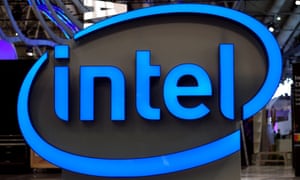kemical
Essential Member
- Joined
- Aug 28, 2007
- Messages
- 36,176
- Thread Author
- #1
New vulnerabilities have recently been discovered with modern cpu's:
It would seem Intel are more prone to attack than AMD:
Microsoft have released patches which will be available via Windows update. If like me yours hasn't arrived then download the standalone version here:
Windows 10:
https://support.microsoft.com/en-us/help/4056892windows-10-update-kb4056892
Windows 8.1:
https://support.microsoft.com/en-us/help/4056898windows-81-update-kb4056898
Windows 7:
https://support.microsoft.com/en-us/help/4056897windows-7-update-kb4056897
(To access the standalone download, scroll down the changelog to 'How to get this update' and click the link)
Meltdown and Spectre exploit critical vulnerabilities in modern processors. These hardware bugs allow programs to steal data which is currently processed on the computer. While programs are typically not permitted to read data from other programs, a malicious program can exploit Meltdown and Spectre to get hold of secrets stored in the memory of other running programs. This might include your passwords stored in a password manager or browser, your personal photos, emails, instant messages and even business-critical documents.
Meltdown and Spectre work on personal computers, mobile devices, and in the cloud. Depending on the cloud provider's infrastructure, it might be possible to steal data from other customers.
It would seem Intel are more prone to attack than AMD:
Which systems are affected by Meltdown?
Meltdown and SpectreDesktop, Laptop, and Cloud computers may be affected by Meltdown. More technically, every Intel processor which implements out-of-order execution is potentially affected, which is effectively every processor since 1995 (except Intel Itanium and Intel Atom before 2013). We successfully tested Meltdown on Intel processor generations released as early as 2011. Currently, we have only verified Meltdown on Intel processors. At the moment, it is unclear whether ARM and AMD processors are also affected by Meltdown.
Which systems are affected by Spectre?
Almost every system is affected by Spectre: Desktops, Laptops, Cloud Servers, as well as Smartphones. More specifically, all modern processors capable of keeping many instructions in flight are potentially vulnerable. In particular, we have verified Spectre on Intel, AMD, and ARM processors.
Which cloud providers are affected by Meltdown?
Cloud providers which use Intel CPUs and Xen PV as virtualization without having patches applied. Furthermore, cloud providers without real hardware virtualization, relying on containers that share one kernel, such as Docker, LXC, or OpenVZ are affected.
Microsoft have released patches which will be available via Windows update. If like me yours hasn't arrived then download the standalone version here:
Windows 10:
https://support.microsoft.com/en-us/help/4056892windows-10-update-kb4056892
Windows 8.1:
https://support.microsoft.com/en-us/help/4056898windows-81-update-kb4056898
Windows 7:
https://support.microsoft.com/en-us/help/4056897windows-7-update-kb4056897
(To access the standalone download, scroll down the changelog to 'How to get this update' and click the link)
